Hi-Res Audio and the exponential growth of audiophile streaming platforms has created a groundswell of interest in network streamers and streaming amplifiers and whilst there are no shortage of options, the market is most certainly clamoring for more affordable ones like the models just released by NAD and Cambridge Audio. The streaming amplifier category has some excellent options from NAD, Bluesound, Naim, Rotel, and Hegel — but finding one below $1,200 USD is certainly more difficult. That void creates an opportunity for products like the Volumio Integro.
Volumio started as a software company creating a Linux-based platform that was designed from the ground up to be an audio player. If you are DIY inclined and have some computer skills, you can grab a Raspberry Pi, Tinkerboard, or PC and load the Volumio OS and you are ready to go. The best part is that the software is free.
There is clearly a cost for the hardware, but the Volumio OS can be downloaded directly from Volumio without cost.
There is a premium subscription service that adds multi-room playback, CD ripping, casting to Sonos systems and native TIDAL and Qobuz integration in addition to all the supported services (Spotify, Pandora, SoundCloud, Internet Radio) of the free version. The current pricing is roughly $65 USD billed annually for the service.
The reality is that not everyone is into DIY and even for those of us that are, there are times when it can be quite difficult to convince your spouse to tolerate the Frankenstein creation in the living room.
With so many consumers using the Volumio OS for music playback, someone clearly got the message that there was an opportunity to offer hardware that was affordable; Volumio now offers three hardware solutions that serve different purposes.
The Primo offers all of the features of Volumio OS premium with the computer, connectivity, and a built-in DAC for those looking to expand their analog system with a streaming input.
For those who have already invested in a DAC, the Volumio Rivo offers all the Volumio premium features with digital outputs so users can integrate Volumio into their digital systems.
For those without an existing system, the Volumio Integro offers most of the features of the Rivo and Primo but substitutes dual 50 watts/channel amplifiers for the pre-amp outputs of the other two models.
Having used the Volumio OS for a long time with my own DIY streaming solution, I was curious to see how the $1,199 USD Integro compared to something far less expensive.

Technology
The Integro utilizes a rather simple wrap around aluminum shell with front and rear face plates and metal feet molded as part of the shell. The main body is gun-metal brushed aluminum with black front and rear face plates and red control knobs as a form of contrast.
The front face is quite simple with two large control knobs (also aluminum) located symmetrically a couple inches from the corners, a display window, and headphone jack located in-between.
The rear face on the other hand is quite busy with a pair of binding posts at each edge for speaker connections (both spades and banana pins) and a myriad of inputs between the two.

The Integro offers a USB Type-A input for attaching external storage, an Ethernet port for wired network connectivity, microSD port, HDMI output (for use with OSD), and a USB Type-C input for software updates/troubleshooting.
There are two digital inputs (1 x coaxial, 1 x toslink), a single pair of RCA inputs, subwoofer output and a barrel power connector on the far right of the rear panel.
One of the benefits of the Volumio Integro is that it does not take up a lot of space on the desktop or inside an equipment rack; the unit measures 10″W x 7″D x 2″H and is rather easy to setup.
The company is very open about the internal electronics; the Integro utilizes the Khadas Vim3 Micro-Computer, a pair of Infineon MA12070P customized modules which are used in the DAC, class D amplification, and the Texas Instruments TPA6120A2 in the headphone stage.
I applaud Volumio for being transparent in that regard; a lot of brands feel the need to hide what they use which is strange considering how easy it has become for users to locate the parts origins online.
The Khadas products have a strong following in the DIY and consumer audio world because their micro-controllers are often found running Volumio, Plex, Kodi, and other streaming applications.
The core of the Vim3 is an AMLogic chip with four A73 cores and two A53 cortex cores along with 2 GB of RAM which gives the unit plenty of power to run the OS.
The MA12070P chips act as both the DAC and amplifier (speakers) and takes an I2s input for a single channel from the main board and handles the decoding and outputs 50 watts/channel (8 ohms) and 70 watts/channel (4 ohms).
By feeding each channel to a distinct module the Integro offers true dual mono amplification allowing for lower noise and distortion. More details about the Infineon modules can be found here.
Much like the design of the speaker output system, the headphone stage utilizes a similar system on a chip approach with the TI TPA6120A2. This chip also incorporates an I2s input, but the headphone amplifier is limited to 1.5 watts — which is more than enough for the vast majority of headphones.
Because the two outputs are completely separate, both can be tuned to the specific use case and there is no issue in regard to added noise creeping in due to trying to add a headphone tap to the speaker amp or a loss of usable volume control when using headphones due to the overlap.
What proved to be interesting during my listening tests, is that the power amplifier and headphone amplifier do not sound the same when it comes to their tonal balance or presentation.

Sound
For the purposes of the review, I replaced my usual office desktop system with the Integro and used the streaming amplifier to drive a wide variety of loudspeakers to ascertain how it handled different loads and to see if it would be a good match with a specific type of loudspeaker.
I started out with a pair of JBL Venue Series Monitors that represent an entry-level pairing with the Integro; that combination was followed up with the ELAC Debut 2.0 6.2s, KEF Q350s, and a pair of JBL HDI-1600s.
I also spent some time learning and using the app on my iPhone; I found it be rather intuitive and it didn’t require a lot of time to setup my local library or stream from Spotify, TIDAL, or Qobuz.
The Integro was surprisingly neutral sounding with very little coloration or noticeable roll-off in the treble or bass.

The JBL Venue loudspeakers do not have a lot of output below 70Hz and it would make sense to add a subwoofer to achieve a more full-range sound with this combination.
The Integro offered enough power for the JBL’s within their power rating, and was more than capable of providing enough power for classical recordings with rather strong percussion. It also offered enough dynamic range for quiet passages without losing any detail or top end energy.
The ELAC Debut 2.0 6.2 loudspeakers are a more difficult load (6 ohms) and the need to adjust the volume level became rather apparent. Once I found a comfortable listening level, I was very impressed with how well the Integro controlled the low end of the ELAC loudspeakers; the bass response was well defined and extremely impactful down to almost 40Hz.
The midrange resolution was good and I found myself drawn into both male and female vocals that were not pushed too far forward of the instrumentation and were very clean sounding. The Debut 2.0 6.2 loudspeakers and the Integro are very good match from a tonal perspective and I really enjoyed how they worked together with all genres of music.
The KEF Q350s have been one of my personal favorite bookshelf loudspeakers for a few years and they demonstrated some of the strengths — and weaknesses of the Integro with classical and rock recordings.
The tonal balance and timbre with most recordings was rather impressive and the Integro had more than enough power to drive the KEF loudspeakers and control the bottom end.

The Q350s do not have the low end impact of the ELAC loudspeakers and certainly benefit from a subwoofer if you have the budget and space. However, above 100Hz, the tonal balance, detail, resolution, and coherency of the Q350 are hard to beat at their price point.
The KEF can be rather revealing and this is where I discovered that the Integro does struggle with micro-detail and micro-dynamics. Listening to Mussorgsky’s Pictures at an Exhibition, it became apparent that as the music became more complex, the Integro struggled with reproducing the inner detail of the individual pieces and that it wasn’t as easy to place each instrument on the soundstage.
With most recordings, the Integro didn’t struggle but large scale orchestral pieces presented a bigger challenge.
The JBL HDI-1600 felt like the logical place to stop with the Volumio Integro; the two products are almost the same price, and the loudspeakers present a more difficult load than the ELAC or KEF loudspeakers.
The JBL have a quoted frequency response of 40Hz – 30kHz and certainly do not require a subwoofer in my office space.
JBL recommends between 15 to 200 watts (which feels like a rather wide range) and I suspected that the Integro’s ability to output 70 watts (4 ohms) would be the perfect amount of power in an office setting.
The JBL sounded extremely transparent driven by the Integro with more than enough control in the low end; rock recordings had rather well defined bass and it was certainly quick and dynamic sounding. Switching over to classical recordings, I was rather surprised by how well the Integro handled strings and piano concertos in regard to timbre and overall presence — although it once again revealed itself to be slightly weaker when it comes to micro-dynamics and detail.
If your chosen pair of loudspeakers does not stray too far from its rated impedance across most of the frequency range (which can be a rather hard ask), the Integro is consistently good with almost every genre of music.



Headphones
The headphone module does have a slightly different tonal balance and it’s certainly worth noting; the overall presentation is cooler and leaner sounding which is direct contrast with how it sounds with loudspeakers.
Headphones like the HiFiMAN HE6 and Arya, or the Sennheiser HD800 and Fostex 909 all worked rather well; the Integro’s headphone section was able to handle both low-impedance, high-current planar models and high-impedance dynamic headphones with a very high level of performance and control.
Resolution was rather good and it was interesting to discover that the micro-dynamic presentation that was an issue with some loudspeakers — was not an issue with any of the headphones.
Conclusion
Look for an in-depth article in March about the Volumio OS, but I walk away from this review with a greater appreciation for it and it is fair to say that it offers a much more affordable alternative to Roon; the Integro is Roon-Ready for those who already use the software.

Volumio is easy to use, flexible, and offers a wide range of support for the major streaming platforms and even Sonos products.
The Integro is not inexpensive at $1,199 but it does accomplish all of its primary goals and is certainly a strong performer with both headphones and loudspeakers.
For an office, bedroom, or den system — the Integro offers enough power, flexibility, connectivity options, and platform support to be a strong recommendation with the appropriate pair of loudspeakers.
For more information: volumio.com/en/product/volumio-integro/


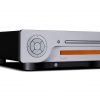
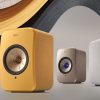

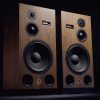
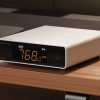








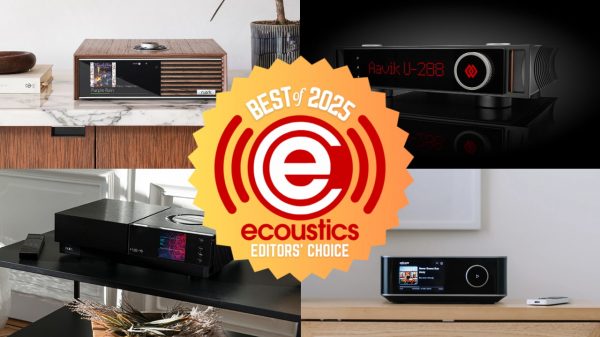


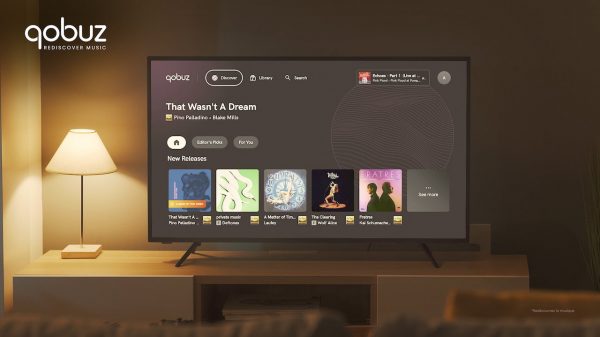




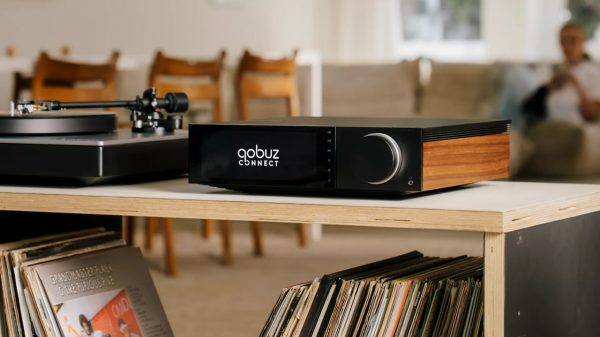
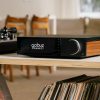











Geoffrey Vanhouwaert
February 18, 2023 at 4:27 pm
Hi,
Great review, a third party power supply can bring this amp/streamer to whole other level.
Best regards
Geoff